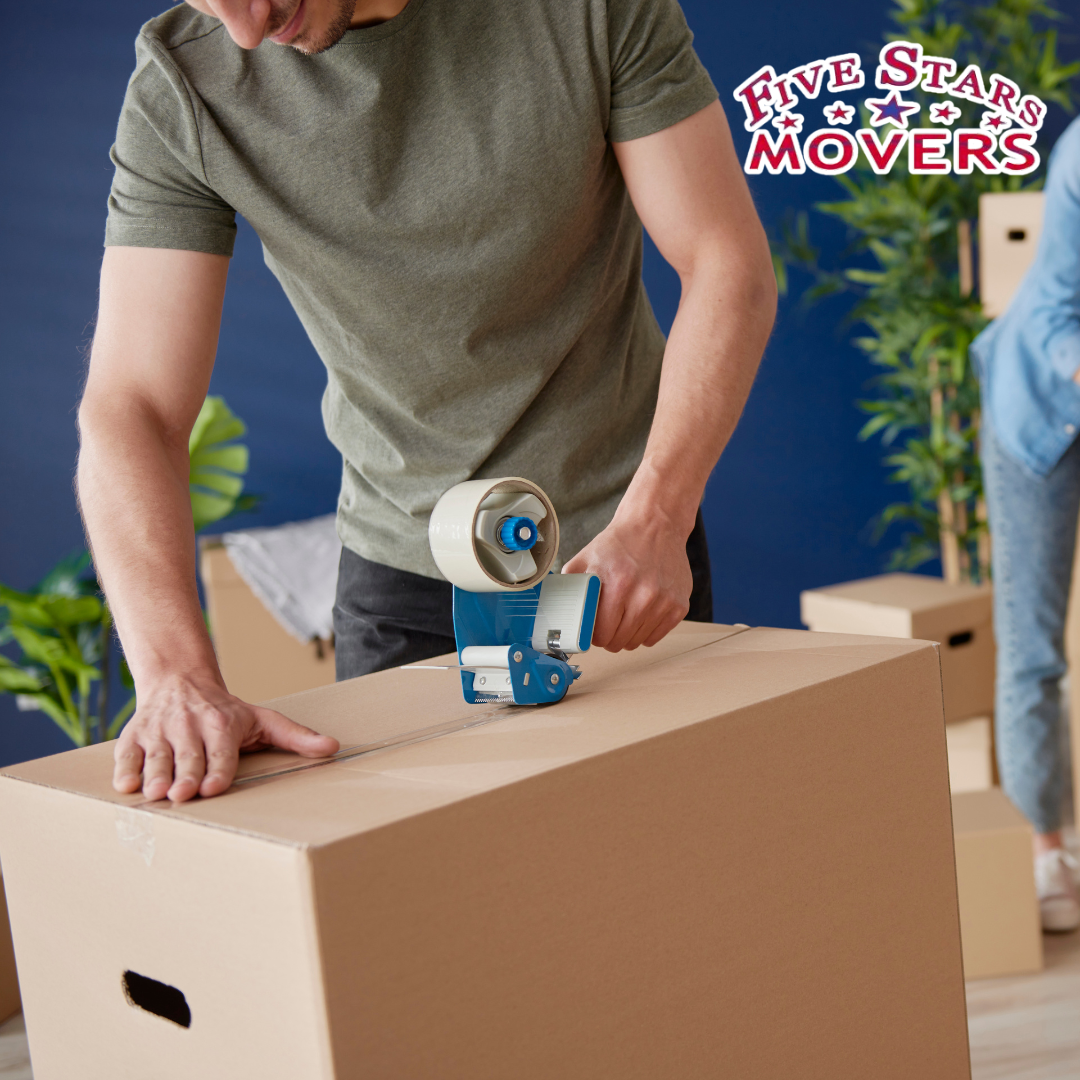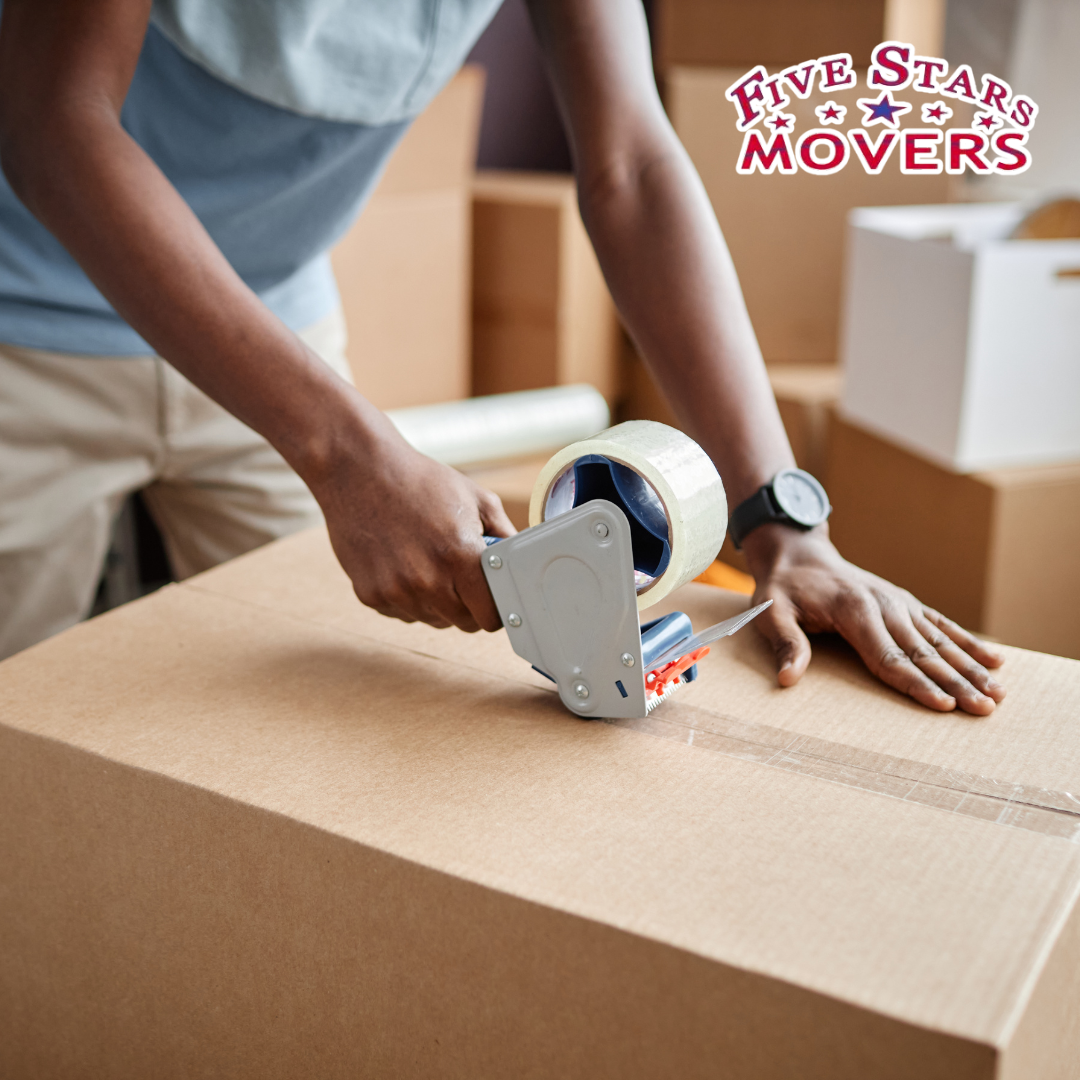Preparing for a long-distance move can feel overwhelming, but the right packing strategy can make all the difference. From protecting fragile items to maximizing space in your boxes, smart packing keeps your belongings safe and organized throughout the journey. Whether it's your first big move or you're a seasoned mover, a few expert tips can go a long way. In this guide, Five Stars Movers shares practical packing advice to help you tackle your long-distance move with confidence.
Organizing Before You Pack
Packing can be challenging, but good organization makes it much easier. Start by creating a system to stay on track and reduce stress. With a clear plan, you’ll avoid feeling out of control while packing your belongings. Gather sturdy boxes, packing tape, and colored markers for labeling. Clear labels like ‘kitchen’ or ‘living room decor’ will simplify unpacking at your new place.
Categorizing Your Belongings
Begin by sorting all items into categories: Keep, Donate, Sell, and Trash. This method breaks down your belongings into manageable decisions and helps reduce clutter during packing. As you go through each room, think about what adds value to your life and what no longer serves a purpose. A helpful question to ask yourself is: “If I wasn’t moving, would I still keep this?” If the answer is no, it’s probably time to donate or throw it away.
By categorizing items thoughtfully, you're making decisions about belongings and preparing for your new living space with intention.
Creating a Moving Inventory
Make a list of every item and destination room in your new home. A detailed moving inventory helps you track what you’re packing and ensures nothing gets lost during the move.
As you create your list, highlight anything valuable or fragile that needs extra care during packing. Using color-coded labels for boxes based on room assignments can also make unpacking faster and more organized.
Once your inventory is finalized, creating a packing timeline is next.
Packing Schedule
To make the most of your time and energy, start with a clear packing plan. Begin by packing less-used areas like guest rooms or storage spaces with seasonal items, then move to rooms you use more often. Leave essentials like kitchenware and daily clothing for last. A helpful tip is to dedicate specific days to individual rooms—for example, pack your home office on Wednesday, focusing on items you won’t need until after the move.
This step-by-step plan keeps you organized and reduces stress while giving you extra time to handle unexpected issues. Before you start, ensure you have all the packing materials ready.
Essential Packing Supplies Checklist
Having the right packing supplies to protect your belongings is important for a smooth moving experience. Think of these supplies as essential tools that help keep everything safe during your move.
Packing Supplies You Need
- Sturdy boxes of various sizes: Opting for multiple sizes means you can efficiently pack small and large items without stressing about overflow or excess space within any box. Sturdiness is key; flimsy boxes can break under pressure and lead to damage.
- Bubble wrap: An absolute must for fragile items. Bubble wrap cushions delicate possessions such as glassware, electronics, and picture frames.
- Packing tape: Invest in high-quality packing tape, usually around 2 inches wide. It seals boxes securely and prevents unwanted openings during transport. I recommend about three to five rolls for an average move.
- Labels or markers: These are vital for proper organization. Color-coded labels simplify unpacking and help clarify where each box belongs in your new home.
- Furniture pads: Whether you keep furniture in the truck or stow it away in storage, pads protect pieces from dings and scratches.
- Stretch wrap: This elastic material is fantastic for securing loose items (like chair legs) or covering furniture to remove dust and dirt during transit.
- Moving blankets: These thick blankets are perfect for cushioning furniture during the trip and shielding against scratches and bumps.
Once you have all your supplies organized and ready, it’s time to focus on safely handling fragile items.
Checklist Items
Having the right supplies is important, but knowing how to use them properly makes all the difference. For instance, always choose quality packing tape over regular adhesive tape. This simple switch ensures your boxes stay securely sealed, preventing accidents during the move. Nobody wants to unpack and find broken items because the boxes weren’t sealed properly.
Use color-coded labels for each room. This simple trick makes unpacking much easier and avoids confusion. Instead of struggling to find your kitchen essentials in a sea of unmarked boxes, you can quickly locate everything in its proper place.
When packing fragile items, always use bubble wrap instead of paper or old clothes. Bubble wrap provides much better protection. Carefully wrap each fragile item before placing it in the box to ensure it arrives intact at your new home.
Taking extra care with packing ensures you can settle into your new place stress-free. With the right supplies and these tips, you’re set for a smooth move, especially when protecting delicate belongings.
Tips for Packing Fragile Items
Packing fragile items requires extra care and attention to detail. From fine china to delicate picture frames, proper steps can prevent damage during transport. Start by wrapping each glass or ceramic item individually in bubble wrap. This creates a protective cushion to absorb shocks and bumps, reducing the risk of breakage.
Once everything is wrapped, fill any empty spaces in your boxes with packing peanuts. These foam pieces keep your items from shifting during transit, adding stability. Be sure to place heavier items at the bottom of the box and lighter ones on top to avoid crushing anything delicate.
For even better protection, consider using specialty boxes designed for fragile items. A little extra effort now can save you from the frustration of damaged belongings later.
Using Specialty Boxes
Invest in specialty boxes designed for fragile items to keep them safe during a move. Cell boxes are great for glassware, with compartments that separate each piece to prevent contact. Dish packs are ideal for plates and other flat items, with reinforced sides that protect against damage during transport. Make sure to seal these boxes securely with strong packing tape so nothing shifts around. Don’t forget to label them clearly with “FRAGILE” to ensure handlers know to take extra care.
Protecting and Packing Furniture
Packing your furniture properly prevents scratches and dents during the move. It might take some extra effort, but it’s worth knowing your items are safe for peace of mind.
Start by disassembling larger furniture like beds, dining tables, and desks. Breaking them down saves space in the moving truck and reduces the risk of damage during transit. As you take apart each piece, keep screws and small parts organized. An easy way to do this is by placing them in labeled plastic bags and taping them to the matching furniture item. This will save you the hassle of searching for missing parts when it’s time to reassemble.
Once you've safely disassembled your furniture, you're ready to wrap and protect it for transport.
Wrapping Furniture
The wrapping stage is crucial for protecting your furniture from damage. Use moving blankets to shield wooden furniture from scratches and scuffs. Ensure the blankets fully cover all exposed surfaces and secure them tightly with stretch wrap or packing tape to keep them in place during transport.
For upholstered furniture, use plastic covers or specialized furniture pads to protect against dust, dirt, and moisture—especially important if rain or humidity is expected on a moving day.
Delicate edges and corners are more likely to get damaged, so wrap them with extra bubble wrap or use corner protectors for added cushioning. Once everything is securely wrapped, you can arrange your items efficiently for the move.
Efficiently Loading and Unloading
When loading a moving truck, always start with the heavy items. Think of it like stacking blocks—if you put lighter items on the bottom, they can get crushed under the weight. Start with large furniture and appliances to create a sturdy base for stacking smaller boxes.
Make sure to distribute the weight across the truck evenly. An uneven load can shift during transit, potentially damaging your belongings and making it harder for the truck to handle turns and stop safely.
After loading everything, focus on unloading efficiently while staying organized.
Unloading Tips
As you arrive at your new home, it’s best to unload room by room according to where each labeled box is supposed to go. This approach saves you from backtracking later on and will streamline the unpacking process. Start with essential rooms like the kitchen and bedroom—these areas you'll likely need access to immediately.
Use an inventory list to check off items as they come out of the truck, ensuring nothing gets left behind. It's like a mini treasure hunt that rewards you with a sense of accomplishment as each checked box represents progress.
With these loading and unloading strategies, you’ll be ready to handle any challenges as you move into your new space.
Key Tips for a Smooth Move
To make your moving day go smoothly, start by staying hydrated and well-rested. Moving can be physically and emotionally demanding, so keeping your energy up is crucial. A simple way to do this is by setting up a cooler with water, electrolyte drinks, or iced tea. Pair these with healthy snacks like granola bars or fruit to keep your strength up. Remember to take breaks—short pauses will help you recharge and stay focused.
Next, prioritize clear communication. Keeping everyone informed is essential whether you're working with professional movers or friends and family. Share your inventory list so everyone knows what’s being moved and where it should go in your new home. Providing a layout of your new space can also help direct where items should be placed as they’re unloaded. If plans change, update everyone immediately to avoid last-minute confusion.
Finally, prepare for your first night in your new home. Pack a "first-night" box with essentials like toiletries, comfortable clothes, device chargers, and basic kitchen items such as plates and utensils. This way, even if most of your belongings are still packed, you'll have everything you need for those first few hours in your new space. And don't forget to celebrate once everything is unloaded and settled—moving can be stressful, but it's also an exciting new chapter in your life.
Moving can be challenging and stressful, but with the right preparation and tools, it doesn't have to be. By investing a little extra time and effort into properly packing and loading your belongings, you can ensure that they arrive at your new home safe and sound. Remember to stay organized, communicate clearly, and take breaks when needed. And don't forget to celebrate once everything is done – after all, you've successfully transitioned into a new space. Contact Five Stars Movers for professional packing and moving services to make your next move a breeze. Their experienced team will handle your belongings with care and efficiency, allowing you to focus on settling into your new home.







